Jaffa Gate is one of the gates of the Old City of Jerusalem. It is the most popularly used entrance to the Old City, by tourists and locals alike.
It begins in the Armenian Quarter, but if you continue straight, you’ll enter the Muslim market, and if you turn to the right and follow the path, you’ll find yourself at the Jewish Quarter.
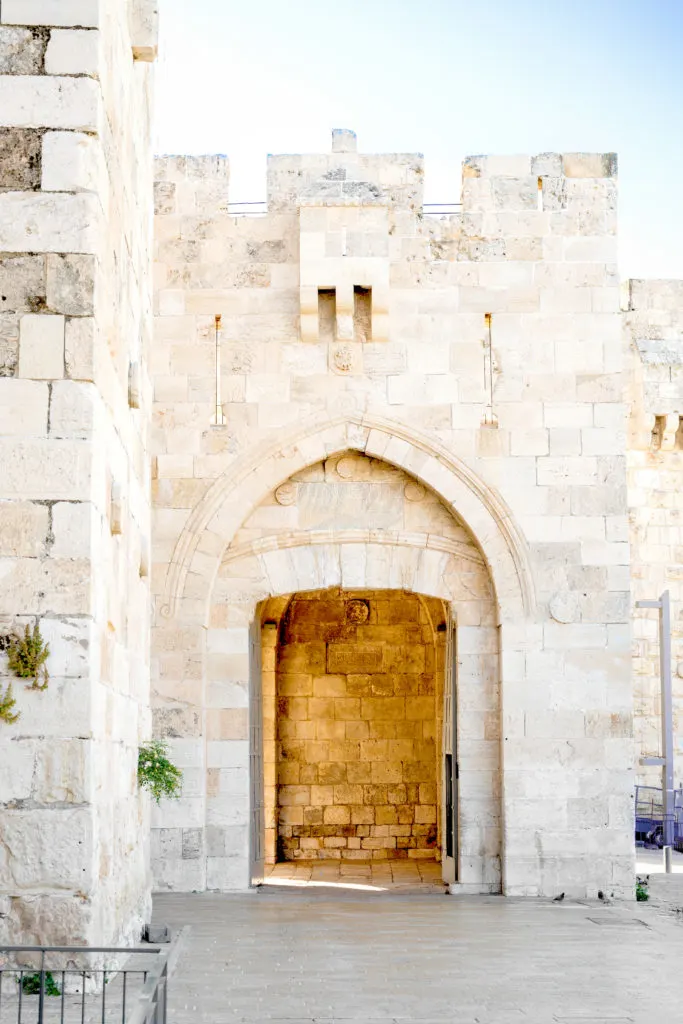
In the past, it was a bustling and central place, the meeting point of merchants, travelers, and pedestrians. Today, right through Jaffa gate is a lively section of the Old City and is filled with shops and visitors.
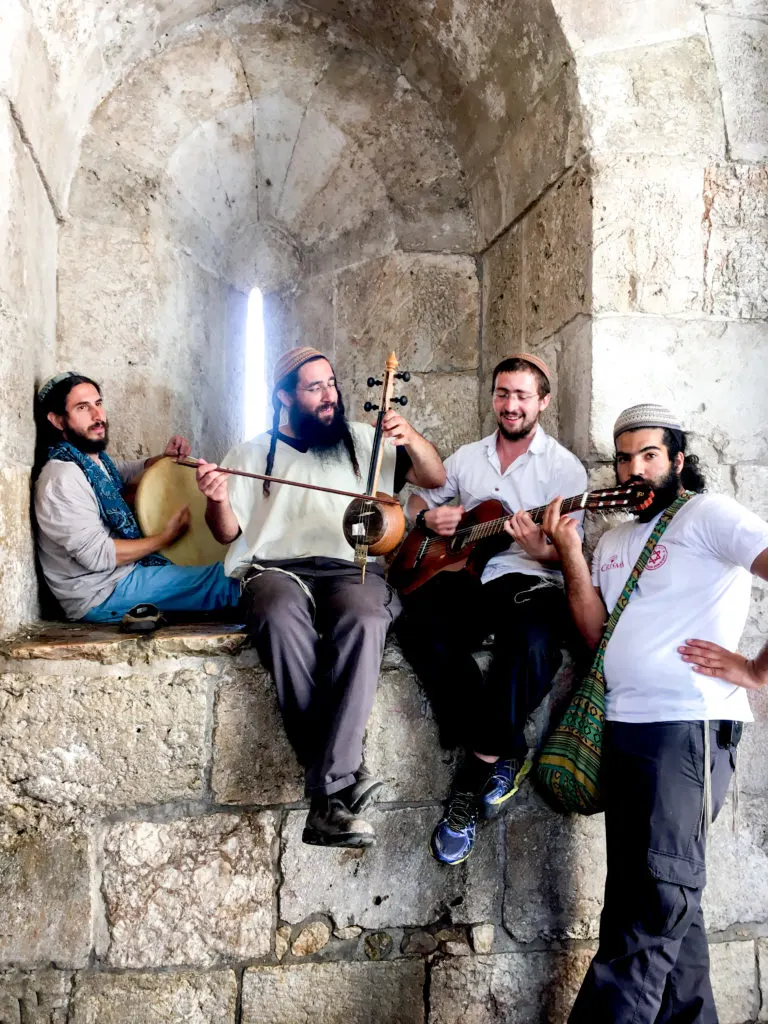
The picture above is of some musicians I once saw playing in side Jaffa gate as I walked through it into the old city. It is honestly one of my favorite pictures I’ve ever taken because it shows so much of the soul of the city.
Right past the gates to your left is the beginning of the Ramparts Walk, where you will get a unique view of the city.
Or, you can continue straight to the shops – I once bought a beautiful handmade Roman glass jewelery from a shop near here.
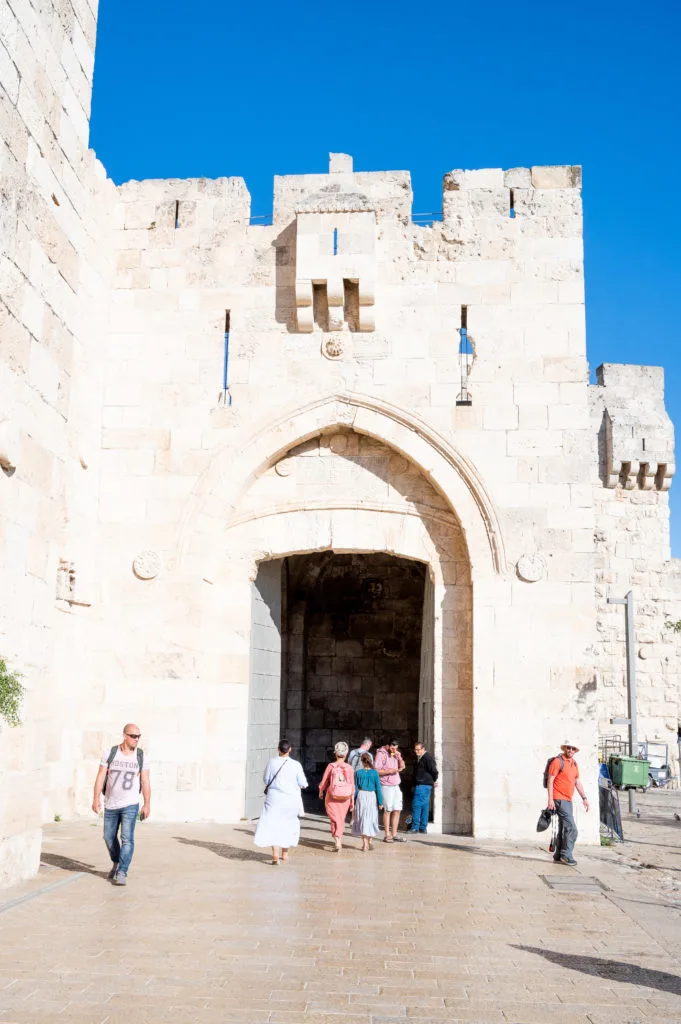
Right inside the gate is the Tower of David Museum and the Ramparts Walk.
Jaffa Gate was completed in 1538 as part of the rebuilding of the Old City walls by Suleiman the Magnificent.
It is called Jaffa Gate because, as it is today, connected to Jaffa Road, which in turn stretched all the way to the port in the Old City of Jaffa. Travelers and pilgrims took this way to the Old City.
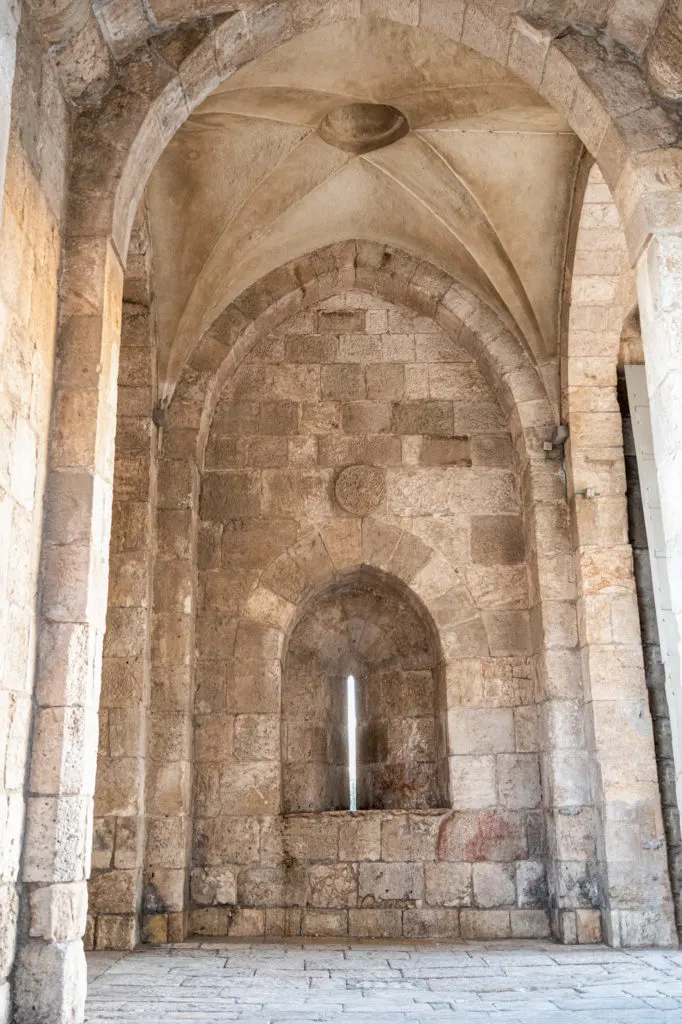
The gate has the shape of a medieval gate tower with an L-shaped entryway, which was secured at both ends with heavy doors. This shape was a classical defensive measure designed to slow down oncoming attackers.
Above the gate, there is an upper combat compartment, named Mashikoli, which was used for a lookout and for spilling hot oil on intruders.
Above the gate, we can see an inscription carved in stone, which blesses the Sultan Suleiman the Magnificent, who built the gate and the walls of the old city.
Next to the Gate is a large breach in the wall, which was created in 1898 by the Ottoman authorities in order to honor the German emperor Wilhelm II who came through them.
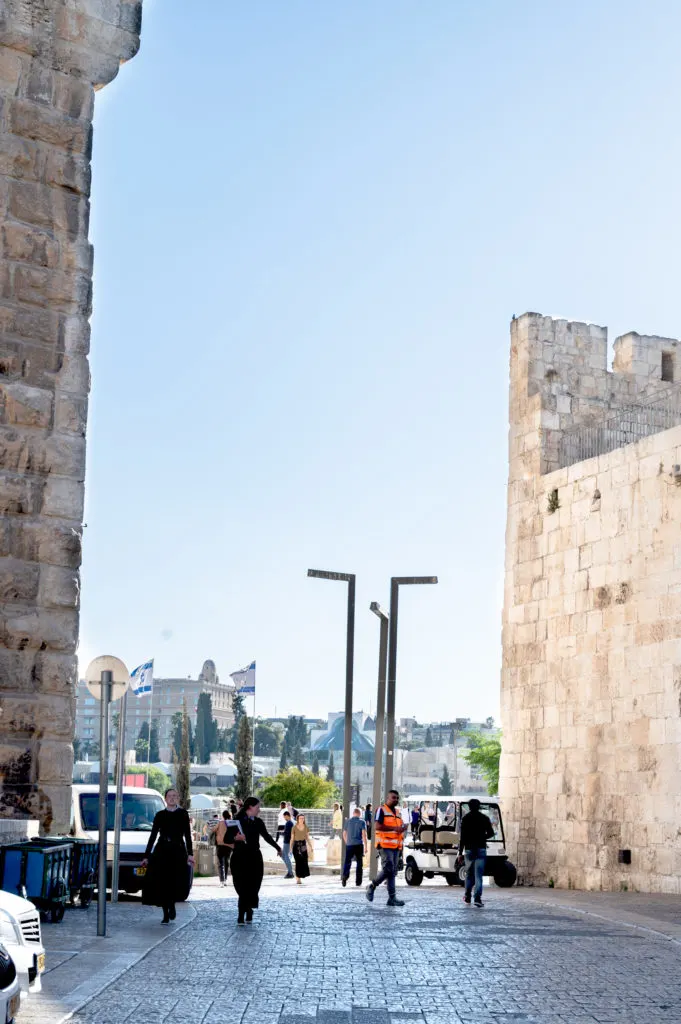
The demolished wall segment moved to citadel moat, a portion of which was filled in, to create a ramp.
The breach and the ramp leading up to it are now allowing cars to access the Old City from the west.
Near this entrance is the Tower of David Museum and the beginning of the Ramparts Walk.
Outside the gate is a stone-paved courtyard from which one can admire views of modern Jerusalem.
You can see Montefiore’s Windmill and his Mishkenot Sha’ananim neighborhood, the red-tile roof of Yemin Moshe neighborhood, and the King David Hotel.
From here, you can enter Mamilla Mall, which is a shopping street and the only open-air mall which leads back to town.